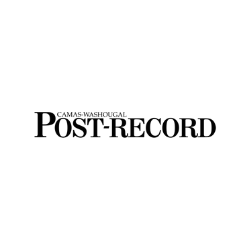There are still ballots left to count, but, so far, voter turnout in Camas and Washougal for this week’s primary election is pretty abysmal.
In Washougal, for example, where voters were asked to choose two out of three candidates — including one candidate who has been called out by community members for numerous controversial issues in his past — to compete in the November general election mayoral race, fewer than one-fourth of the city’s 11,271 registered voters weighed in.
Voter turnout in Camas, where two city council races were at stake, was also less than stellar, with only 1,255 voters casting ballots so far for interim mayor Ellen Burton’s vacant Ward 3, Position 2 seat and 1,063 voters casting ballots for outgoing councilor Melissa Smith’s Ward 1, Position 2 seat.
Of course, primary elections regularly have lower voter turnout than general elections, but these numbers are significantly lower.
For example, when Burton ran unopposed for her Ward 3 council seat in the November 2019 general election, 4,943 voters turned out to overwhelmingly (92%) vote for Burton over write-in candidates. That means nearly four times more voters came out for an unopposed city council race than for a primary race that included four candidates running very diverse campaigns, including a former Washougal city councilor, a recipient of the mayor’s “Volunteer Spirit Award,” the chairman of the local school board’s citizen advisory committee and a relative newcomer to Camas who raised more than $20,000 from mostly outside donors.
Likewise, Smith’s Ward 1 council race in the November 2017 general election attracted 3,442 voters — three times the number who turned out for this week’s primary election, which also included four candidates, including one who raised a significant amount of money from donors living outside the city limits.
Nationwide, there are groups focused on structural barriers that prevent hundreds of thousands of Americans from voting, but those barriers often don’t exist when it comes to elections in Southwest Washington, where voters are lucky enough to have same-day registration available and nearly two weeks’ worth of time to review their candidate options and either mail or drop off their ballots.
The voter-apathy issues here are different than other areas of the country where voters find themselves inexplicably purged from voter rolls , facing a day without wages — if they can even take time off work on Election Day — to stand in long lines because partisan voter-restriction laws have led to some areas, typically those that include lower-income and minority voters, only having a handful of polling locations to serve thousands of citizens.
It’s tough to say why nearly three-fourths of active, registered voters in Camas-Washougal don’t send their ballots in — or just drop them in a local drop box — during primary elections, but o ne reason may be the elections’ nonpartisan status. We heard from more than one Camas City Council candidate that many of the questions they fielded this year from Camas voters had more to do with which party they supported than with what they might do to improve their community if elected.
Did local voters care more about voting for their party than for the people who might best represent the entire community’s needs?
There is no doubt Americans have become more likely to look at party first when filling out their ballots. In fact, a January 2020 study by the National Bureau of Economic Research shows our country has become more divided over politics than any other democracy, and that this polarization has increased rapidly since the 1980s Reagan era. The researchers found American citizens tend to see those across the political aisle as “the other,” likely due to the fact that our two-party system has become more focused on ideological differences.
“The period we study saw important changes in the composition of the political parties in the U.S.,” the study’s authors state in their introduction. “Among both political elites and voters, party identification became increasingly aligned with both political ideology and social identities such as race and religion.”
Data shows the type of religion people identify with often dictates which “side” they fall on politically and who they will vote for in every election — no matter who the candidates might be.
For example, a 2014 national study showed Mormons were “the most heavily Republican-learning religious group in the U.S.” Likewise, nearly all of those who identified as Evangelical in their religion also had strong affiliations with the Republican Party. On the other side, members of historically Black churches, as well as Americans who identified as Jewish, Agnostic, Muslim, Hindu, Buddhist, Atheist and Unitarian Universalist were far more likely to belong to the Democratic Party.
As anyone who frequents city council meetings knows, one of the greatest things about local governments is the fact that officials, who often come from deeply divided political backgrounds, are forced to listen to other points of view and try to find common ground that advances the greater good of their community. There is a good reason why these positions are, and should remain, nonpartisan.
The challenge in today’s deeply divided landscape is how we all — local journalists, elected officials, trusted religious leaders, educators, etc. — might promote the importance of voting for city council, school board and mayoral candidates based not on which party they prefer but on what they might actually be able to accomplish as an elected official.
Our first question for local candidates should never be: “Are you left or right?” but rather, “What specific actions will you take to bring the community together instead of adding to the divide?”
